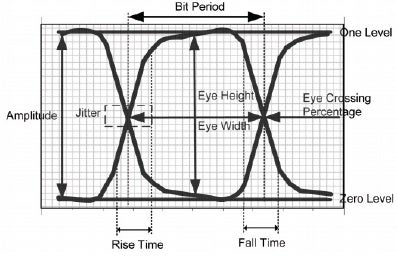
The old black box strategy, where design engineers and manufacturers worked in isolation, has been replaced by an open, transparent white box approach that emphasizes the following of contract manufacturer (CM) design for manufacturing and assembly (DFMA) rules and guidelines by PCB designers and the understanding and consideration of your design intent by CMs when building circuit boards. This spirit of integration is being manifested throughout the electronics industry. And with smart PCB design integrations, you can greatly improve the effectiveness and efficiency of your design process workflow.
PCB Design Integration Types
Of the three stages of circuit board development—design⇨build⇨test (DBT)—the PCB design process is the most important. This initial stage not only informs the other stages but also dictates how your board is built and which tests must be performed. PCB design is most often described as consisting of schematic capture and PCB design layout steps.
This simple overview falls short of accurately expressing the complexity and interdependence of the individual procedures required to efficiently create the data and imagery necessary to build and validate electronic circuit boards. These relationships can be referred to as PCB design integration areas.
PCB DESIGN INTEGRATION AREAS | |
Integration Area | Products and Services |
Component Selection | Component CAD libraries, parts sourcing, parts distribution, component manufacturing |
Component CAD Libraries and Data | Component CAD library creation and management |
Component Procurement | Parts sourcing, parts distribution, component CAD libraries |
PCB Material Selection | EDA software programs, material manufacturing |
Data and Project Management | Project Library Management (PLM) software, work-in-progress project tracking |
ECAD/MCAD Software | PCB design programs, analysis and simulation programs, mechanical design programs |
Reference Designs | Reference designs, component CAD libraries, parts sourcing, parts distribution, component manufacturing |
PCB Design, Manufacturing and Testing Industry Standards and Compliance | Compliance verification tools, industry standards, compliance testing events |
PCB Manufacturing and Testing | Fabrication services, assembly services, compliance verification tools, specialized testing |
As listed above, there are several areas where an interdependence of products/services exists for the creation of circuit board designs. If utilized effectively, PCB design integrations such as these can greatly improve the process flow, accuracy, and security of data transfer, efficiency, and quality of your design.
Design Integration Advantages
Electronics product developers are constantly challenged to deliver devices and systems that are smaller, execute faster, and have more functionality. The best way to simultaneously address the external and internal factors that determine the quality and success of your product development is to leverage software integration for supplementing EDA program shortcomings and taking advantage of tools and techniques that enhance communication and data transfer between all programs and services that comprise your PCB design digital thread.
There are distinct benefits to optimizing the flow of data between all of the software tools used throughout your PCB design process, as listed below.
PCB DESIGN INTEGRATION AREAS | |
| |
As shown above, the advantages of PCB design integration implementation are more efficiency and greater accuracy, which are among the most important cost factors for minimizing product design cost and maximizing development ROI.
Creating the Best Design Integration for Your Workflow
The electronics industry is competitive. There are typically multiple options from which to choose for each of the PCB design integration areas or categories. Therefore, it is important to follow a set of procedures, such as listed below, to determine which integrations to implement.
PCB Design Integration Paradigm
- Identify pertinent integration areas or categories for your project.
- Select potential integration teams for your design or project.
- Choose and verify compatibility of your EDA software with tools of chosen integration(s).
- Implement integration(s).
The paradigm above is straightforward. However, making the best choices at each step can be difficult and costly if the wrong decisions are made. Partnering with an industry leader that has the expertise and experience to help you make the best integration determinations is the best option to avoid these contingencies.
EMA Design Automation is a leading provider of the resources that engineers rely on to accelerate innovation. We provide solutions that include PCB design and analysis packages, custom integration software, and engineering expertise, which enable you to create more efficiently. For more information on PCB design integrations and how we can help you or your team innovate faster, contact us.











